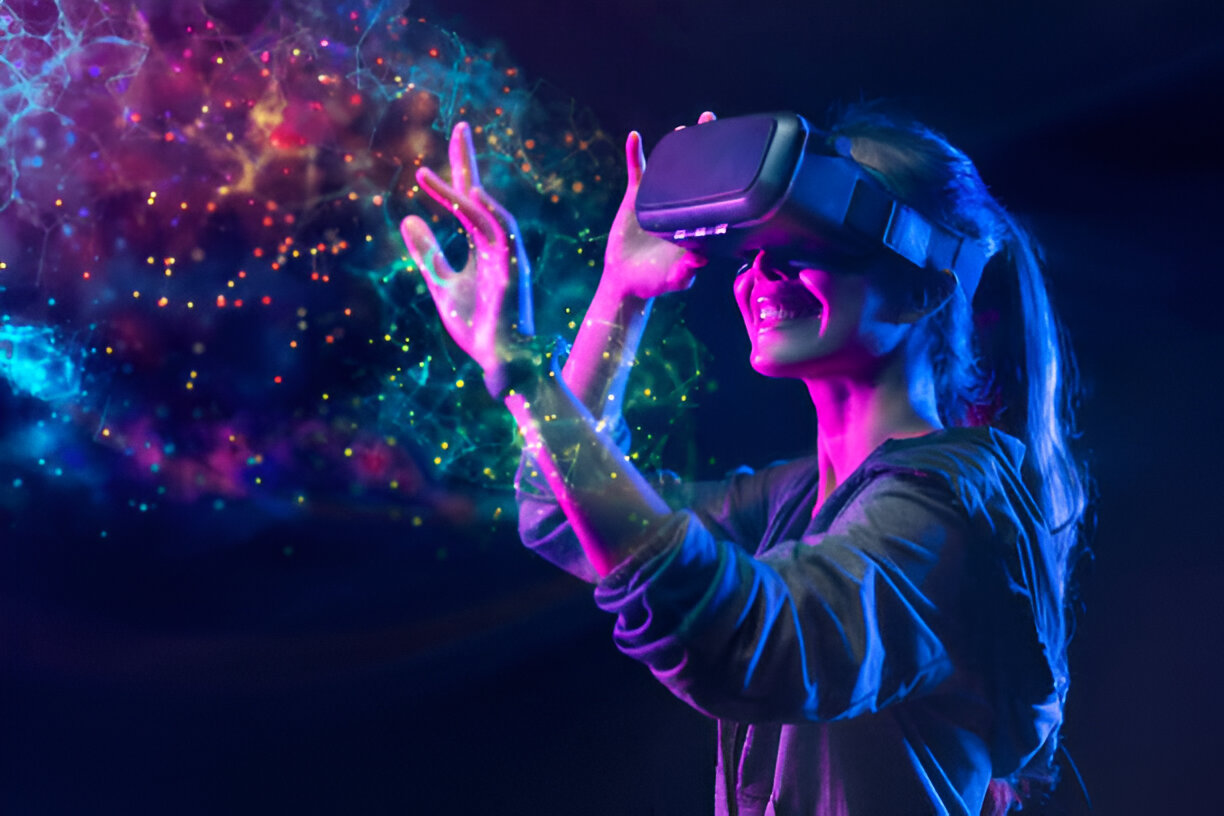Introduction
The entertainment industry is in the midst of a revolutionary transformation powered by immersive technologies. Virtual Reality (VR), Augmented Reality (AR), Mixed Reality (MR), and Extended Reality (XR) are no longer futuristic concepts—they are reshaping how content is created, distributed, and experienced. In 2025, audiences expect more than just passive viewing—they crave interaction, immersion, and emotional engagement.
From blockbuster films and gaming to live concerts and virtual theme parks, immersive tech is enabling richer storytelling, deeper user participation, and new revenue models. This article explores how immersive technologies are revolutionizing the entertainment sector and what lies ahead.
What Are Immersive Technologies?
Immersive technologies simulate or enhance reality using computer-generated environments and elements. The key players include:
-
Virtual Reality (VR): Fully immersive environments experienced via headsets like Meta Quest or HTC Vive.
-
Augmented Reality (AR): Overlays digital content onto the real world using smartphones or smart glasses (e.g., Pokémon GO, Snapchat filters).
-
Mixed Reality (MR): Combines physical and digital objects that interact in real time (e.g., Microsoft HoloLens).
-
Extended Reality (XR): An umbrella term that includes all of the above.
These technologies break the fourth wall of traditional media, placing the audience within the story rather than outside of it.
Immersive Tech in Film and Television
Interactive Storytelling
Immersive cinema is evolving beyond 3D. Filmmakers are creating interactive narratives where viewers influence plot direction, character decisions, and outcomes. Think of Netflix’s Bandersnatch, but on steroids—powered by AI and real-time rendering engines like Unreal Engine 5.
Virtual Sets and Production
Hollywood is adopting virtual production to replace physical sets. Using LED walls, 3D environments are rendered live on set, allowing for:
-
Dynamic lighting and camera movements
-
Reduced costs and travel
-
Real-time post-production
The series The Mandalorian was a pioneer in this space, setting the benchmark for future productions.
Immersive Movie Experiences
Cinemas are embracing 4DX and VR cinema, offering:
-
Motion-synchronized seating
-
Scent diffusion and environmental effects
-
VR headsets for 360° storytelling
These multi-sensory experiences are drawing audiences back to theaters.
The Gaming Industry: A Powerhouse of Immersion
VR Gaming
Games like Half-Life: Alyx, Beat Saber, and Boneworks have shown what’s possible with VR. In 2025, the market is seeing:
-
More affordable, standalone VR headsets
-
Haptic suits and gloves for tactile feedback
-
Room-scale tracking for complete freedom of movement
VR is making games not just visual but physical experiences.
AR in Mobile and Console Gaming
AR games blend the digital with the real, creating unique gameplay layers. Popular implementations include:
-
Pokémon GO AR battles
-
Location-based scavenger hunts
-
Multiplayer AR board games
Gaming studios are increasingly integrating cloud-based AR rendering, enabling high-quality experiences on standard devices.
Cloud Gaming and XR Integration
Cloud platforms like NVIDIA GeForce NOW and Xbox Cloud Gaming are teaming up with XR interfaces to stream high-fidelity games in immersive formats. Users can now game without powerful hardware, democratizing access to immersive content.
Live Entertainment and Virtual Events
Virtual Concerts and Festivals
Artists like Travis Scott and Ariana Grande have hosted virtual concerts in platforms like Fortnite and Roblox, attracting millions of viewers. In 2025:
-
VR concerts offer front-row access to global fans
-
Holographic performances bring artists to multiple venues at once
-
AI-generated virtual artists are creating original content
Immersive Theater and Experiences
Theater is going immersive with spatial audio, VR headsets, and audience interaction. Productions can now:
-
Change scenes in real-time
-
Let viewers “walk” through the narrative
-
Personalize plotlines based on participant choices
It’s theater as both performance and participation.
Theme Parks and Location-Based Entertainment
Theme parks are deploying immersive tech to redefine attraction design. Innovations include:
-
AR treasure hunts within physical parks
-
VR roller coasters with dynamic visuals
-
Interactive queues with gamified experiences
Disney and Universal are investing heavily in XR development, creating hybrid experiences that blend real-world structures with fantastical digital layers.
The Role of AI and Real-Time Rendering
AI is accelerating immersive entertainment by:
-
Personalizing story arcs based on user behavior
-
Generating lifelike avatars and environments
-
Automating voiceovers with emotion-aware speech synthesis
Real-time rendering engines like Unity and Unreal Engine enable content that reacts dynamically to user input, ensuring no two experiences are the same.
A recent study featured on Brettintech, a cutting-edge Tech website, highlighted how entertainment studios are combining AI, cloud rendering, and motion capture to produce real-time, high-definition immersive films with dramatically lower budgets.
Monetization and Business Models
Immersive experiences are opening new revenue streams:
-
Subscription-based VR platforms like Meta Horizon Worlds
-
In-experience purchases and NFT collectibles
-
Virtual merchandise and branded experiences
-
Sponsorships within virtual concerts or games
Content creators and tech companies are forming cross-industry collaborations to tap into these opportunities.
Challenges to Overcome
Despite rapid growth, challenges remain:
-
High hardware costs limit accessibility
-
Motion sickness and eye strain are still concerns
-
Content creation requires specialized skills
-
Data privacy in virtual spaces is a growing issue
Continued innovation, open standards, and user-focused design will be critical to sustainable growth.
The Future of Immersive Entertainment
By 2030, immersive technologies will likely be as common as smartphones are today. Innovations on the horizon include:
-
Neural interfaces that bypass screens
-
Fully immersive holographic environments
-
AI-driven characters indistinguishable from real people
As we move forward, platforms like Brettintech will continue to document the evolution of immersive entertainment, offering insights into how technology is transforming the way we tell and experience stories.
Conclusion
Immersive technologies are not a passing trend—they’re the future of entertainment. From cinema and gaming to concerts and theme parks, these tools are redefining engagement and pushing the limits of creativity. As hardware becomes more accessible and content more diverse, immersive experiences will soon be part of everyday life.
Keeping up with these trends is essential for creators, investors, and consumers. Whether you’re a storyteller, a gamer, or a tech innovator, immersive technologies offer a front-row seat to the next era of entertainment.









